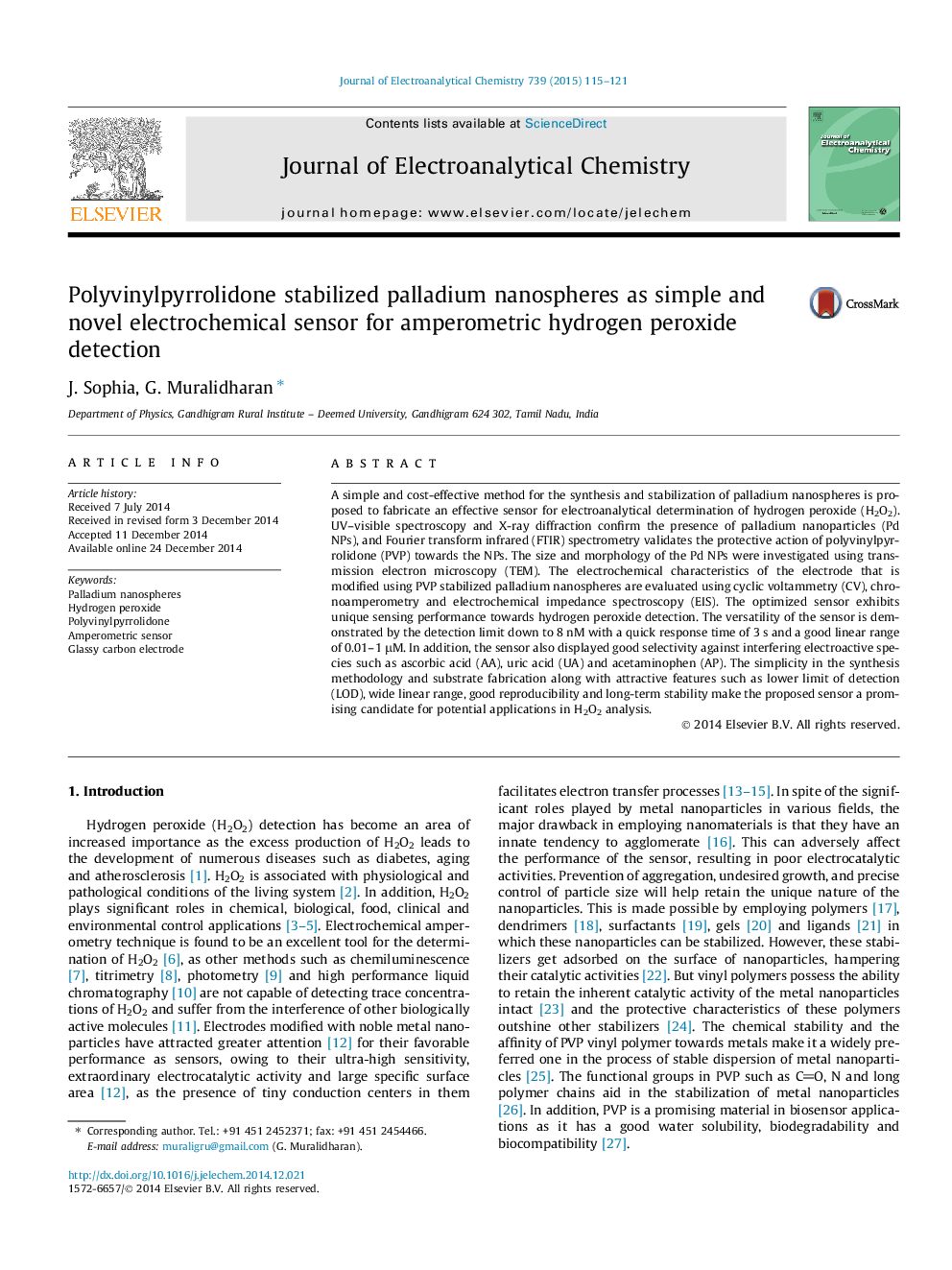| Article ID | Journal | Published Year | Pages | File Type |
|---|---|---|---|---|
| 218548 | Journal of Electroanalytical Chemistry | 2015 | 7 Pages |
•A simple and cost effective method is proposed for H2O2 detection.•A very low detection limit of 8 nM is achieved using the fabricated sensor.•The sensor exhibits wide linear range, swift response time and good sensitivity.
A simple and cost-effective method for the synthesis and stabilization of palladium nanospheres is proposed to fabricate an effective sensor for electroanalytical determination of hydrogen peroxide (H2O2). UV–visible spectroscopy and X-ray diffraction confirm the presence of palladium nanoparticles (Pd NPs), and Fourier transform infrared (FTIR) spectrometry validates the protective action of polyvinylpyrrolidone (PVP) towards the NPs. The size and morphology of the Pd NPs were investigated using transmission electron microscopy (TEM). The electrochemical characteristics of the electrode that is modified using PVP stabilized palladium nanospheres are evaluated using cyclic voltammetry (CV), chronoamperometry and electrochemical impedance spectroscopy (EIS). The optimized sensor exhibits unique sensing performance towards hydrogen peroxide detection. The versatility of the sensor is demonstrated by the detection limit down to 8 nM with a quick response time of 3 s and a good linear range of 0.01–1 μM. In addition, the sensor also displayed good selectivity against interfering electroactive species such as ascorbic acid (AA), uric acid (UA) and acetaminophen (AP). The simplicity in the synthesis methodology and substrate fabrication along with attractive features such as lower limit of detection (LOD), wide linear range, good reproducibility and long-term stability make the proposed sensor a promising candidate for potential applications in H2O2 analysis.
Graphical abstractFigure optionsDownload full-size imageDownload as PowerPoint slide
